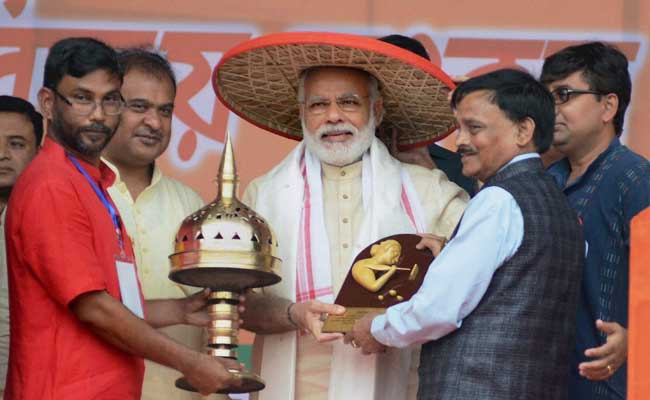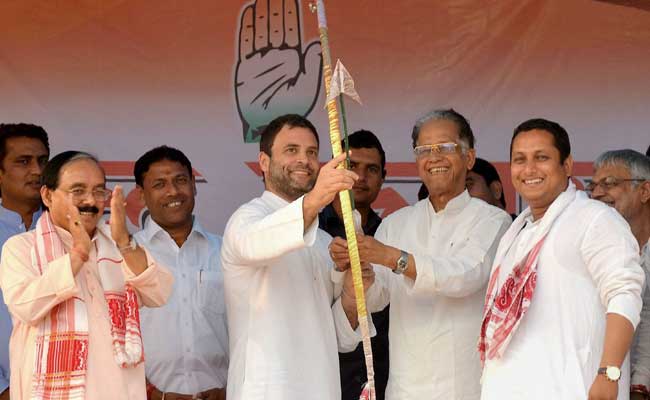First, it recognizes the role of Assamese Muslims, who are often marginalised in the complexity of Assam's politics. Second, it brings to the fore the major concern about illegal migrants and the implications of foreigners making inroads into the electoral process by illegal entry into the voters' list.
The Muslim identity in Assam is very complex. Assamese Muslims, settled in the region for centuries, trace their roots in many directions but primarily to the invading Mughal armies. Over centuries, their identity has transcended religion and embraced the larger identity of "Assamese". In this state, where sacred mosques and revered temples have existed side by side, the communal harmony was nurtured by the humanism of Sankardeva and the religious catholicism of people like Ajan Fakir. Assamese Muslims imbibed that ethos.
The other strand of Muslims, also migrants to the land for over a century, came to be known as the "new Assamese". Their history was a part of geography. Assam was, for some time, part of the same British administrative unit as the erstwhile Rangpur and Mymensingh districts, now in Bangladesh. Vast, fertile, unoccupied land attracted hard-working migrants, perhaps to some extent encouraged by the British.

Prime Minister Narendra Modi being felicitated with a traditional japi (hat), during an election rally in Sonitpur (PTI photo)
They settled mostly in the river islands and riverine areas and over a century, became a part of larger Assamese society. In the subsequent census enumeration, most of them enrolled as Assamese-speaking - a fact that changed the linguistic profile of the state with many far-reaching consequences.
Nevertheless, as early as 1931, the then Superintendent of Census Operations, CS Mullan, had stated in no uncertain terms the possible future socio-economic implications of such migration: "Probably the most important event in the province during the last 25 years - an event, moreover, which seems likely to alter permanently the whole future of Assam and to destroy more surely than did the Burmese invaders of 1820 the whole structure of Assamese culture and civilisation - has been invasion of a vast horde of land hungry Bengali immigrants, mostly Muslims, from the districts of Eastern Bengal and in particular from Mymensingh."
Recent history and the partition of 1947 have made geography a burden for Assam. Unfortunately the migration - legal before 1947, illegal subsequently - continued unabated and largely unchecked. The report of the Governor of Assam in 1998, taken note of by the Supreme Court in its judgement in the Illegal Migrants (Determination by Tribunal) or IMDT Act case, shows the growth of the Muslim population in Assam at 77 per cent as against the national average of 55 per cent for 1971-91, suggestive of large-scale illegal migration.

Congress vice president Rahul Gandhi and Assam Chief Minister Tarun Gogoi at a public meeting in Tezpur (PTI photo)
The primary clause of the Assam Accord (1985) for detection and deportation of migrants who came after March 25, 1971, has remained almost unimplemented. For 20 years, the IMDT Act was the stumbling block. The White Paper on the subject published by the government of Assam shows that only 29,237 persons were declared as foreigners till 2012 and only 2,442 were deported.
Even if the Tribunals had been able to detect more foreigners, reported to be in millions, deporting them across the border would be almost impossible without the cooperation of the Bangladesh government. Bangladeshi diplomats in India are known to have said that this matter was never discussed in bilateral meetings. Bangladesh has of course not formally admitted that there has been any migration illegally to India.
In the meantime, the border remains porous and migrants continue to come. The one-man commission of the Supreme Court to assess the ground realities reportedly found to its dismay the existence of an established mechanism that enabled and still enables Bangladeshi nationals to come freely to this country, and acquire citizenship and voter rights.
In this vicious cycle the best and pragmatic hope is that the issue of detection and deportation is seriously taken up as a national duty.
In the meantime, a system must be evolved without delay to ensure that no foreigner can acquire voting rights and right to land. Happily, a very exhaustive effort is reportedly underway to update the National Register of Citizens of 1950. Properly done, this could be the best immediate protection for Assamese even though no headway has been made in 30 years on the crucial clause six of the Accord to "provide constitutional, legislative and administrative safeguards for cultural, social, linguistic identity" of the Assamese people.
(The author is a former member of the Northeastern Council. He was previously an IAS officer who served in Assam.)
Disclaimer: The opinions expressed within this article are the personal opinions of the author. The facts and opinions appearing in the article do not reflect the views of NDTV and NDTV does not assume any responsibility or liability for the same.


